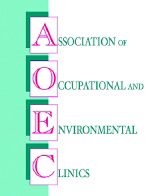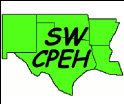| An Unexplained Case of Elevated Blood Lead in a Hispanic Child Larry K. Lowry,1 Debra C. Cherry,1 Charles F. "Tim" Brady,1 Barbara Huggins,1 Anita M. D'Sa,2 and Jeffrey L. Levin1 1Southwest Center for Pediatric Environmental Health, The University of Texas Health Center at Tyler, Tyler, Texas, USA; 2Children's Clinic, Jacksonville, Texas, USA Abstract
   Southwest Center for Pediatric Environmental Health, and University of Texas Health Center at Tyler A 6-month-old child presented to a local pediatrician with an elevated blood lead level (BLL) of 41 µg/dL. The child was treated as an outpatient for chelation therapy by a toxicologist. Subsequent BLLs obtained at 8 and 13 months of age were 40 µg/dL and 42 µg/dL, respectively. Siblings and family members had BLLs < 5 µg/dL except for the mother, who had a BLL of 14 µg/dL when the child was 6 months of age. Home inspections and phone calls to the family revealed no sources of lead from paint, dust, toys, mini-blinds, keys, food, water, or any take-home exposure. The family denied use of folk remedies such as Greta and Azarcon. The child was breast-fed, but the mother's BLL was not sufficiently high to explain the elevated BLL in the child. Housekeeping was excellent. The mother did admit to cooking beans in Mexican pottery (pieces found outside were positive for lead) , but she discontinued use after the initial lead check at 6 months. The bean pot was not a likely source, as none of the family had elevated BLLs including a 5-year-old sister. Follow-up testing of blood lead when the child was 15 months of age revealed values of 28 µg/dL for the child and 9 µg/dL for the mother. Subsequent testing of the child shows a slow decline. The slow release of lead suggests depletion of bone stores acquired during pregnancy, possibly due to pica behavior of the mother during pregnancy. Key words: adult pica, blood lead, children, Hispanic family, lead-glazed pottery, lead kinetics. Environ Health Perspect 112:222-225 (2004) . doi:10.1289/ehp.6486 available via http://dx.doi.org/ [Online 12 November 2003]
Address correspondence to L.K. Lowry, Occupational Health Sciences, The University of Texas Health Center at Tyler, 11937 U.S. Highway 271, Tyler, TX 75708-3154 USA. Telephone: (903) 877-5717. Fax: (903) 877-7982. E-mail: larry.lowry@uthct.edu We thank the Texas Department of Health, Region 4/5 North, directed by P. McGaha, for interest and support of this project, especially C. Fambrough, who conducted the initial and follow-up investigations for lead. We also thank the family for their cooperation during this investigation. The Southwest Center for Pediatric Environmental Health is 1 of 13 Pediatric Environmental Health Specialty Units supported by the Association of Occupational and Environmental Clinics (AOEC) through a cooperative agreement (U50/ATU300014) with the Agency for Toxic Substances and Disease Registry and the U.S. Environmental Protection Agency. The authors declare they have no competing financial interests. Received 28 May 2003 ; accepted 12 November 2003.
The full version of this article is available for free in HTML or PDF formats. |

